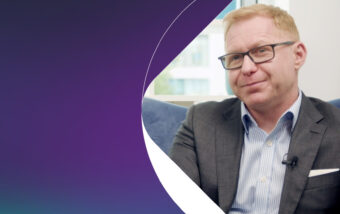British Cycling has captured 16 gold medals in the last two Olympics and British riders have won the tour De France 3 times in the last four years. Their rise to the top and phenomenal continued success is accredited to the simple principle of marginal gains, which is becoming commonplace not only in the world of elite sports but across many industries. For a numbers guy like me, the marginal gains mindset makes perfect sense and at Quadrant Group we have been applying this philosophy to achieve investor returns.
The concept behind marginal gains is that if you improve every variable underpinning or influencing your performance by just 1% then cumulatively you will get a significant improvement. The approach is thorough and every conceivable area is considered, including peripheral things that may only contribute a fractional improvement. It’s about looking at any little gain in performance as an aggregate part of the bigger picture.
British Cycling has demonstrated the impact of the marginal gains approach spectacularly over the past decade. Team Sky Director, Dave Brailsford, explained the idea of marginal gains to the BBC in 2012:
“The whole principle came from the idea that if you broke down everything you could think of that goes into riding a bike and then improved it by 1%, you will get a significant increase when you put them all together.
“There’s fitness and conditioning, of course, but there are other things that might seem on the periphery, like sleeping in the right position, having the same pillow when you are away and training in different places.
“They’re tiny things but if you clump them together it makes a big difference.”
At Quadrant, we agree with the principle of marginal gains as an effective approach for wealth management too. Investment is inherently unpredictable, but we are able to control how we manage some of the key contributing factors, to ensure that our clients receive everything that the market has to offer and maximize their overall returns. By applying a marginal gains mindset, through our Wealth Partnership process, we support clients to fully understand what they’re trying to achieve and what’s required to achieve that success. Having identified all the things that impact on financial performance and where improvements could be made, we work with them to do better in each area, including the 1% marginal improvement areas.
With our decades of experience in wealth management and our structured and disciplined approach to investing, we have examined several areas that contribute to long term results.
Keeping Costs Down
We offer clients transparent and low-fee investing. There are no hidden charges or surprises. Many other firms are hiding layers of charges more focused on pocketing the profits for themselves. We understand clearly that reducing costs, even by seemingly small percentages, will reduce compounded charges that add up over time and have a significant impact on overall fund returns. In 2009 the average all-in cost to a client investing £500,000 in our AstutePortfolio 60 was 1.68%. This covered everything, including platform costs, advisor charges, administration and, most significantly, transaction fees. We were well below the average figure of 2.74% per annum.
But we wanted to do more. We wanted to offer our clients more savings. So we spent a significant amount of time with our platform providers and fund managers, reviewing costs. Our AstutePortfolio 60 is now 1.54% per annum. That’s a saving of 0.14%. On a £500k portfolio, that’s a saving of £700 per year, which really adds up over the long term of your partnership with us. This proved to be a rewarding marginal gain.
Risk Management
An optimal portfolio is based on your capacity and willingness to take risk. This investment principle should certainly be very familiar to anyone that has met with a Quadrant Group adviser. That is why we ask investors to take the FinaMetrica questionnaire. Based on your results and using our insightful planning process we suggest an AstutePortfolio that will best meet your needs and expectations in the long term, matching the risk exposure of the portfolio to your personal risk capacity. This process allows us to identify expected returns and the journey you can expect over the lifetime of your investment.
Taking an academic approach to investing means that we rely on objective and peer-reviewed research that has stood the test of time and withstood a high level of scrutiny. We aim to give our clients the highest possible probability of a successful investment experience by examining their risk aversity and matching this with a portfolio that fits their profile. By adopting this approach, we can achieve further marginal gains.
Rebalancing
Rebalancing is the process of buying and selling portions of your portfolio in order to set the weight of each asset class back to its original state. By and large, riskier assets will deliver greater growth over time and portfolios will become skewed towards these assets. Often this is well beyond the tolerance set for volatility and the potential of further gains will backfire instead towards greater losses. It is sometimes difficult to persuade investors that rebalancing should be implemented to the original allocation on a regular basis. This discipline forces the sale of assets that have done well and reinvests assets that have done less well, which keeps a portfolio’s exposure to risk reasonably constant over time. It may seem like a loss in the short term but maintaining the right levels of risk exposure by rebalancing regularly (but no more than twice per year) is essential to achieving consistent long term gains.
Governance
Our Investment Committee, takes a great deal of time and care to ensure that our AstutePortfolios are structured to capture market returns. They are responsible for monitoring our funds and portfolio performance.
As retail investors, we are bombarded with market information, much of which is investment spam from product providers promoting the latest trend such as carbon credits, infrastructure funds, gold, student accommodation, etc. All too often these are superficial ideas that lack proper analysis. While we remain open to innovation and certainly keep in touch with research both domestically and globally, our approach is always to evaluate potential and existing assets with strict criteria. This no-nonsense structured and systematic approach has resulted in a succinct yet very robust set of asset classes that are protected from fads and fashion.
Investing to Beat Inflation
The UK has a history of bouts of high unanticipated inflation and periods of sustained insidious lower inflation or, as we recently experienced, deflation. The impact of qualitative easing combined with the temptation to inflate away some of the burden of the national debt, make the risk of future inflation very real. Long-term investors should be acutely aware of the considerable risk of inflation to their goals, as should those who are reaching retirement and most vulnerable to it.
We have taken a very broad look at this issue and have several inflation protection assets within our portfolios. While there is no one simple solution for how to protect purchasing power longer term, our more risk-tolerant portfolios are globally diversified with asset classes, including shorter-dated bonds alongside equities and commercial property. There is no easy answer, but we regularly review our options and understand that small percentage changes have a big long term impact.
Managing Emotions
Everyone agrees that the winning formula is to buy low and sell high, but time and again we do the precise opposite. The majority of private investors give into their emotions – even the professionals are prone to it. However, the long-term effect of emotional decision making can be catastrophic.
If you base your portfolio decisions on short term highs and lows you will inevitably miss your long term goals. Part of the marginal gains approach is to keep disciplined. We see our role as a coach to help you through periods of doubt and to provide you with the information and reassurance you need to avoid making emotional decisions that will be detrimental to your wealth. We aim to keep you on track to win.
Sir Chris Hoy, the most decorated Olympic cyclist of all time, said “It’s all of it, the science, the training, the coaches, but most of all we point the mirror at ourselves and ask, how can we get better?”
That is the mindset that underpins marginal gains. Making a commitment to the small steps, the 1%s that get us incrementally closer to your goals to enjoy a life well lived.
—
This article does not constitute financial advice. Individuals must not rely on this information to make a financial or investment decision. Before making any decision, we recommend you consult your financial planner to take into account your particular investment objectives, financial situation and individual needs. Past performance is not a guide to future performance. The value of an investment and the income from it may go down as well as up and investors may not get back the amount originally invested. This document may include forward-looking statements that are based upon our current opinions, expectations and projections.





